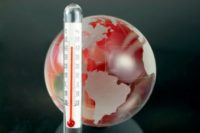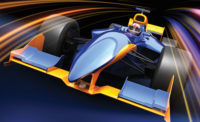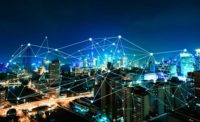In every issue in 2016 ISHN marks its 50th anniversary by looking back at key events of the past half-decade and looking at challenges that lie ahead for safety and health professionals.
Did you know coming soon to a new car for you will be a tiny camera in the rearview mirror aimed at your eyeballs while you drive? When you’re stressed out and your pupils are dilated, the camera will catch it and trigger “driving controls” to ensure you don’t fly off the road.
Welcome to the age – not quite here yet but around the bend – of pervasive personal monitoring. In the workplace it will be a boon for safety and health pros, and a challenge. In the past 50 years, pros have had all sort of issues on their plate to deal with. Privacy rights have not been one of them. But the coming wave of wearable technology and sensors everywhere will change that.
Behold Big Brother
It is becoming easier than ever for employers to keep an eye on their staff. With emerging technologies, companies can monitor where employees are and what they’re up to but also how they’re feeling – whether they’re stressed, tired or not getting enough exercise outside work.
Some workplace tracking technologies are already widely used. Low-cost GPS systems are used to record the progress of delivery drivers. Earpieces relay orders to warehouse employees and can also track their performance and downtime. At Amazon, workers are encouraged to report on each other’s performance via an online feedback tool.
Monitoring more intimate details about personal health and wellbeing is less commonplace, though that’s expected to change with the spread of wearable technology. In 2014, sales of devices such as the Fitbit and Jawbone, which track exercise, food intake, sleep patterns and other health-related information, totaled 26.4 million; that number was expected to rise to 72.1 million by the end of 2015.
According to the technology research company Gartner, around 10,000 companies worldwide offered their staff fitness trackers in 2014 and the firm predicts that next year most companies with more than 500 employees will offer them.
How are you sleeping at night?
Employers will know things like how much you exercise or how well you sleep at night, under the guise of “management diagnostic tools.” Personal monitoring, on and off the job, will be justified by studies indicating that what impacts performance at work is not just what employees do at work – there are correlations between sleep patterns and concentration, between levels of anxiety and stress outside the workplace and performance inside the workplace.
How do you think your workforce will feel about this?
Some big-time companies already are into the game. BP gives out Fitbit fitness trackers to its North American staff as part of an incentive program to reduce healthcare costs. If personal fitness improves, say by hitting a steps-per-day target, personal health-insurance premiums come down.
These ”health and wellness” promotion initiatives raise invasion of privacy issues. Many employees object to being monitored. Will employers use personal data against employees? Will they share it with third parties? Potential exploitation raises not only legal issues, but possible health risks. Awareness of scrutiny and pressure to meet targets 24/7/365 can cause anxiety, defeating improvement in wellbeing.
The future is now in the eyes of NIOSH. In 2014, NIOSH expanded an existing program to establish a Center for Direct Reading and Sensor Technologies, recognizing the significance of sensor technology to workplace safety and health.
Privacy ethics in the spotlight
How will the ballyhooed “Internet-of-Things” affect safety and health pros? For example, “smart” textiles and “smart” PPE is being integrated into PPE for fire fighters, first responders and everyday workers.
Privacy ethics will take center stage as employers collect more and more data about employees, their health (such as breathing and heart rate), their whereabouts (GPS), their behaviors in the workplace (including posture and motion). How will personal monitoring be used in exposure assessments, medical surveillance, hazard identification and possible even performance appraisals?
Here’s a term you should get to know: data singularity. Imagine if almost everything — streets, car bumpers, doors, hydroelectric dams — has a tiny sensor. This is already a reality through Internet-of-Things projects run by the likes of General Electric and IBM.
Smart tech takes over
Devices and sensors will wirelessly connect to distant data centers — or safety and health departments — where computer servers will manage and analyze all this information. Servers can then send back commands to whatever the sensors are connected to in order to operate more effectively and safely. A warehouse automatically turns up the heat ahead of cold weather moving in, or warning signs and alarms sound and machines shut down when safety boundary zones have been trespassed. Imagine a safety and health department instantly resolving who is accountable for what an instant after a forklift crash or assembly line accident because it has been automatically fed information about the circumstances.
A whole new technology is going to overtake the safety and health world, for better and for worse. Pros will have instant access to video images and data analytics. Some responses will be automatic. Others will require snap decisions by pros. Lives will be saved. Hidden hazards identified. Risk assessments revolutionized. But safety and health pros will face pressures unlike ever before. Professional judgments will be rendered in mere seconds. And the avalanche of analytics coming into their possession could be overwhelming. How will lean and mean staffing keep pace with wireless sensors and wearables sending in a constant stream of data that requires quick reaction times and decisions? Will pros lose control to automated responses?
It’s a cliché, but a brave new world is hurtling toward the safety and health professions faster than many pros might ever imagine.





